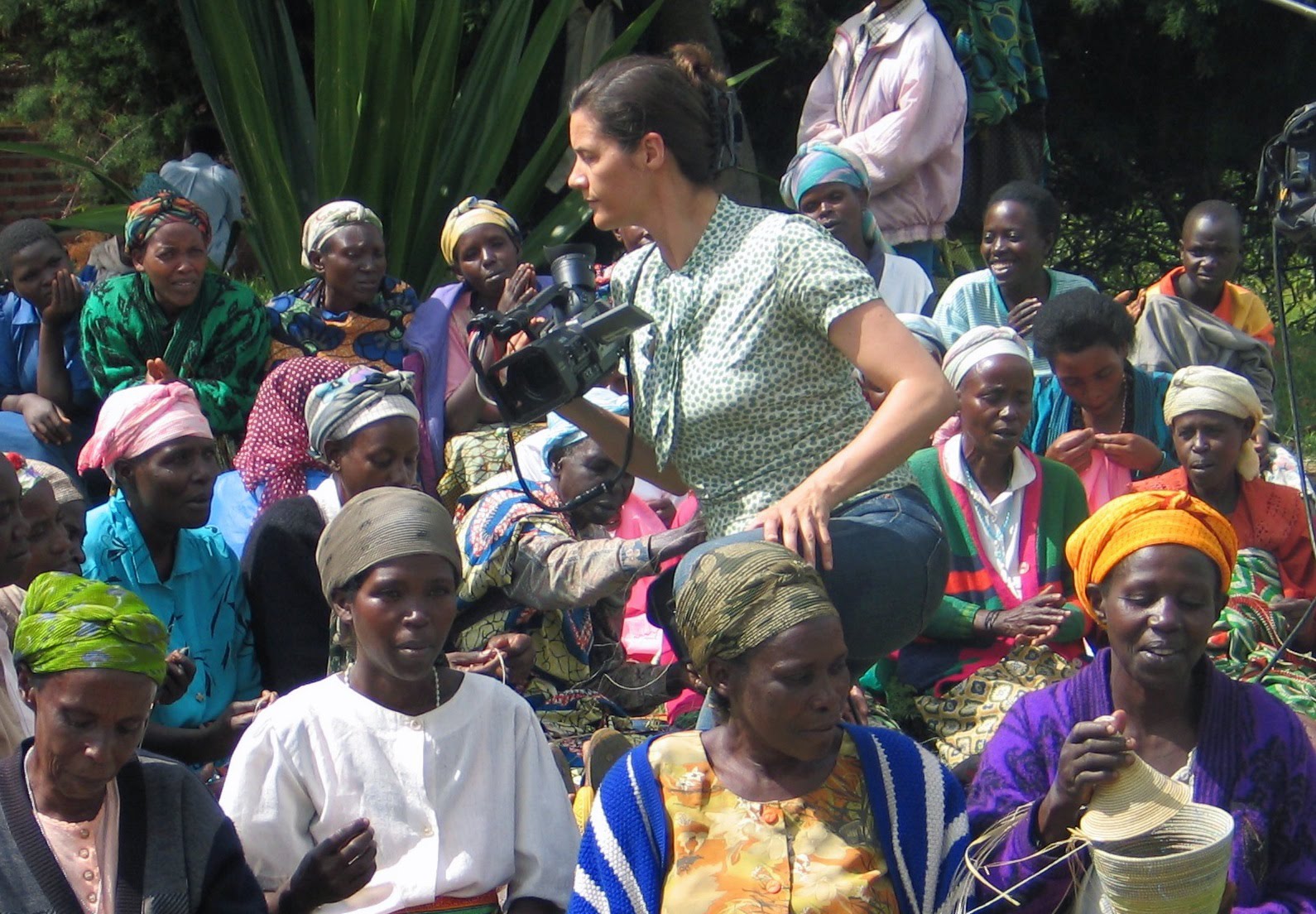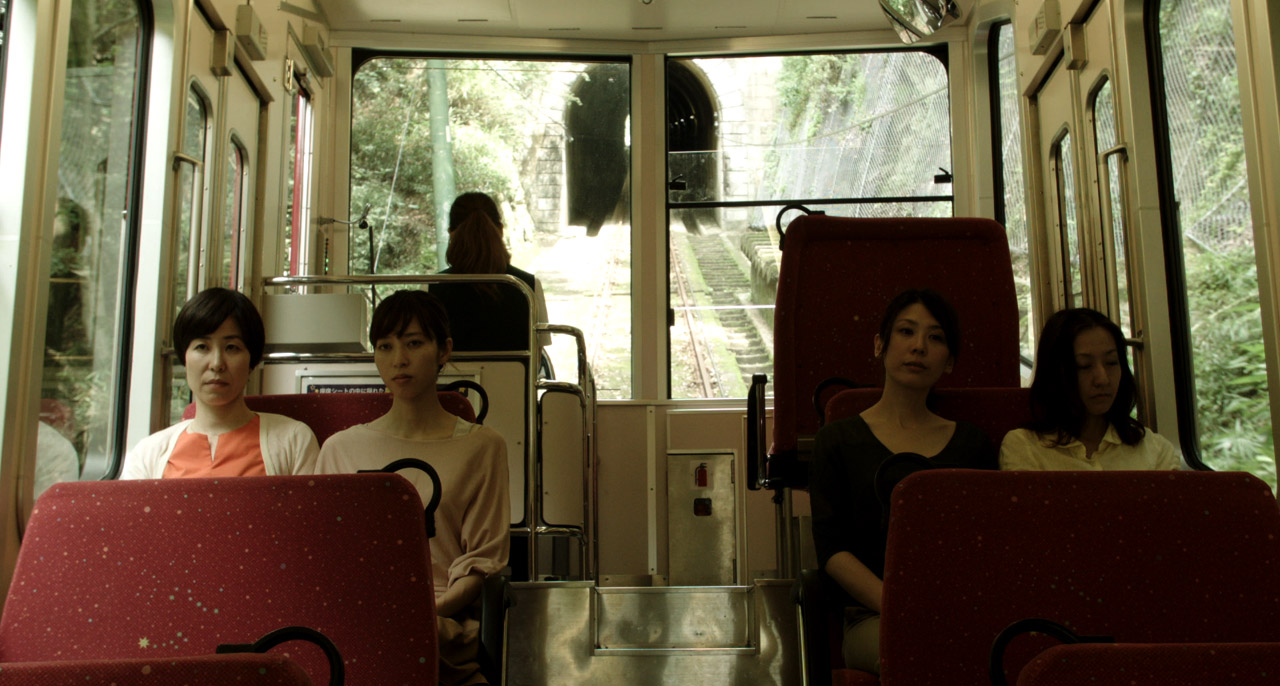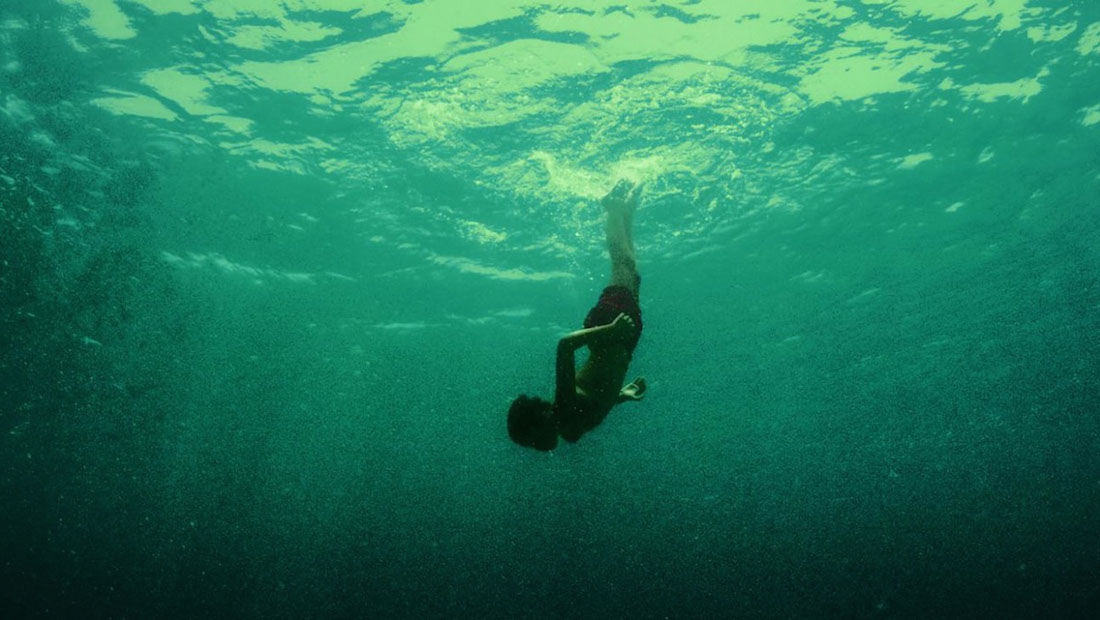The 45th edition of New Directors/New Films features movies, as it always has, with a wide variety of themes, subjects, locations and cultures, demonstrating the New York-based festival’s commitment in showcasing a diverse array of talent, new names and faces that cinephiles should notice and remember. One can’t help but find a strong undercurrent feminist theme emerging in some of these films, which in many cases are the highlights of the festival. Whether the work is by a woman director, features a cross-sectional look at different female characters, tells the tale of a bizarre matriarchal sci-fi fantasy world, or shows us fragments of mesmerizing, often touching footage embedded firmly within the jarring throes of filmed reality, these features illustrate the degree to which new generations of filmmakers are embracing characters and voices outside of the traditionally male and white perspective seen in film.
Lucile Hadžihalilović’s “Evolution” [pictured above] is perhaps the strangest film of the bunch, and the most confusing. Days after having seen it, I still can’t decide what I think about it, but I can tell you how it makes me feel: revolted. Certain unsettling images from this strange fantasy world are indelibly carved into my brain, causing me to immediately lose my appetite every time I remember them. One gets the sense, however, that Hadžihalilović is intentionally causing the viewer to be confused and disturbed, forcing him or her to consider the messy, scary physical manifestations of reproduction and how much that process is forced upon a single gender. Discomfort is necessary to the viewing process.
In this future evolutionary world there are part-human, part-animal communities and we get the fortune of seeing just one at work—a small, quiet, French sea-creature village run entirely by women with large black pupils and very blonde, almost-nonexistent eyebrows. There are no men, no girls. The women take care of boys, though “take care” should be interpreted loosely; while each woman has her own child, it’s up for debate whether or not they are mothers, either biologically or in the sense of acting as guardians. It appears that the women are impregnating the boys and forcing them to carry their sea creature babies, though the boys are unwitting slaves to the process—they’re more like scientific lab rats raised in sheltered surroundings.
Unlike the other films highlighted here, “Evolution“ is really seen through the perspective of a boy—a young, curious and tenacious protagonist who can’t quite understand what the mothers, nurses or doctors are doing to him and his friends. Neither can the viewer, because information about their reproduction process is doled out so slowly and incompletely that by film’s end, many questions remain. With the exception of the unsatisfying ending, this style of narrative exposition reminds me of the similarly confusing but compelling “Upstream Color,” while its serene, slow, strange tone is also reminiscent of “Under the Skin.”

There are newborn babies in at least two different films in this festival, and they couldn’t be more different. The creepy, sea-creature babies in “Evolution” are one, and thankfully they aren’t real; the other is an actual baby in “Cameraperson” [pictured above], a beautiful documentary by Kirsten Johnson who has worked as a director of photography and camera operator for notable documentarians like Laura Poitras, Michael Moore and Barbara Kopple.
In one scene, we see a midwife slowly and dexterously delivering the aforementioned baby, which can’t seem to quite come out of its mother’s body. We don’t see the mother, only bed sheets soaked in blood. Is the woman still alive? We’re not sure. Is the baby still alive? Again, we’re not sure. The professional and caring manner in which the midwife takes the newborn and wraps it in a blanket before administering a series of actions to help the baby breathe (shaking it upside down, which is shocking to watch, trying to remove blood from the baby’s lungs, providing CPR) is beautiful and sublime in its simplicity. It’s the kind of observational footage that’s missing from many documentaries these days, because subjects have learned how to perform in front of a camera. And that’s the beauty of Johnson’s film: she has stitched together unused footage from the films she’s worked on and archived over the years, with extremely touching and formally daring results. Subjects are relaxed here—perhaps they think the camera is off, or that they’re just warming up for the real interview.
The film has no narrative, no thesis to prove, and no obvious throughline, simply minutes of footage that change in location, subject, visual composition and tone, over and over again. There are lawyers, midwives, grandmothers, children, boxers, and animals. There are locations like New York, Foča, Bosnia, Sana’a, Yemen, Pennsylvania, Zalengei, Darfur, and Kabul, Afghanistan. There are conversations about rape, abortion, PTSD, and watermelons. There are recurring scenes taken from the same footage—for example, we see the midwife going about her daily routines some time before the scene in which she delivers the baby.
The combination of repetition and juxtaposition slowly begins to create a series of thematic connections: life, death, the struggles of women, the anger of men. These are palpable, resonating feelings that, despite the geographical and cultural differences between subjects, all feel interconnected. Some of these patterns are more obvious—late in the film, multiple scenes in succession directly feature death or hint at it, and they are sometimes shocking to watch. This montage includes the baby-saving midwife, some casual family footage of Johnson’s children who have just discovered a dead bird, a very sombre clip of the James Byrd Jr. legal team quietly taking out the chains (used by his murderers to drag his body) from the evidence box, and footage of Johnson’s distraught, angry friend, whose mother had recently killed herself. Other juxtaposing scenes are more compositional in their similarities, like footage of an Afghan mosque’s interiors, with its beautiful, colourful and ornate walls seen in the background of the frame, followed by an American dance recital taking place at some equally ornate location that looks very similar to the mosque, despite the two locales’ immense cultural differences (not to mention the differences in music, atmosphere, and activity!).
“Cameraperson” is a very personal film. Johnson’s attachments to her subjects begins to show in subtle ways, but she also returns to repeated scenes of her Alzheimer’s-afflicted mother, someone dear to her heart. Perhaps it’s too intimate a reading, but I can’t help but feel that the director is trying to make sense of her mother’s death through her own life’s accumulation of experiences from the documentary footage, healing by witnessing the emotional reactions of her subjects and their own struggles in life.

Many of the scenes in “Cameraperson” are especially beautiful when they’re understated, a rare but fortuitous happenstance of being in the right place at the right time with a recording camera. In fiction film, understatedness can be hard to write and act, but Ryûsuke Hamaguchi’s “Happy Hour” [pictured above] is testament that it can be done, and done well. Of course, the Japanese director takes his time in creating such a dialogue-rich atmosphere—across 317 minutes, no less—but the long running time is absolutely crucial in establishing the slow pace and gradual character development necessary for this kind of tonal realism, a kind sorely missing from so many narrative drama films tied to the traditional two-hour story structure (or even the most artful television series, which are also chained to their own episodic nature). “Happy Hour” is about four female friends undergoing midlife crises (the women are technically only in the mid-30s, but life-altering changes are nonetheless afoot). It’s hard to do the story justice when there is so much of it, but suffice it to say the emotionally rewarding plot points in this film—and there are many—remind me of Howard Hawks’ “Only Angels Have Wings,” Edward Yang’s “Yi Yi,” and Robert Altman’s “Short Cuts.”
Given the similar types of marital discord and life dissatisfaction in the “Happy Hour,” one also can’t help but see this movie as being a cross-section of what it’s like to be a woman in Japan today, though its social commentary is only part of its immense artistry. Like Asghar Farhadi’s “A Separation,” “Happy Hour” shows us a particularly damning representation of a specific culture and the ways in which intricate social structures affect people’s individual psychologies, but it’s also the kind of out-of-left-field narrative masterpiece that demands formal analysis. In other words: “Happy Hour” is fascinating for two very different things: 1) the way it teaches us what Japanese society can be like and how it can fail; and 2) the way it tells its story. The film shows how male microaggressions—the subtle learned behaviours with which the seemingly well-meaning male characters demean the female characters—are slow and insidious in their soul-sucking power. When relationships collapse, the men are shocked, completely unaware of how they’ve let down their partners. They seem to mean well, but don’t seem to understand how and when they undermine their women. The female characters are sometimes happy but more frequently distraught, prone to impulsive actions that demonstrate their repressed frustrations. Their friendships with each other are both nourishing and empowering, but also at conflict sometimes with their own interests. Two very long scenes that help structure the film—a non-verbal communication workshop at the film’s beginning, and a literary reading and Q&A session near the film’s end—are allowed to play out in real time, in an agonizing and awkward fashion that haunts every scene that follows those two set-pieces. With this kind of maximalist running time and exquisite narrative precision, Hamaguchi ensures that each and every scene plays out to its fullest while reaping the rewards of a dramatically rich yarn.

